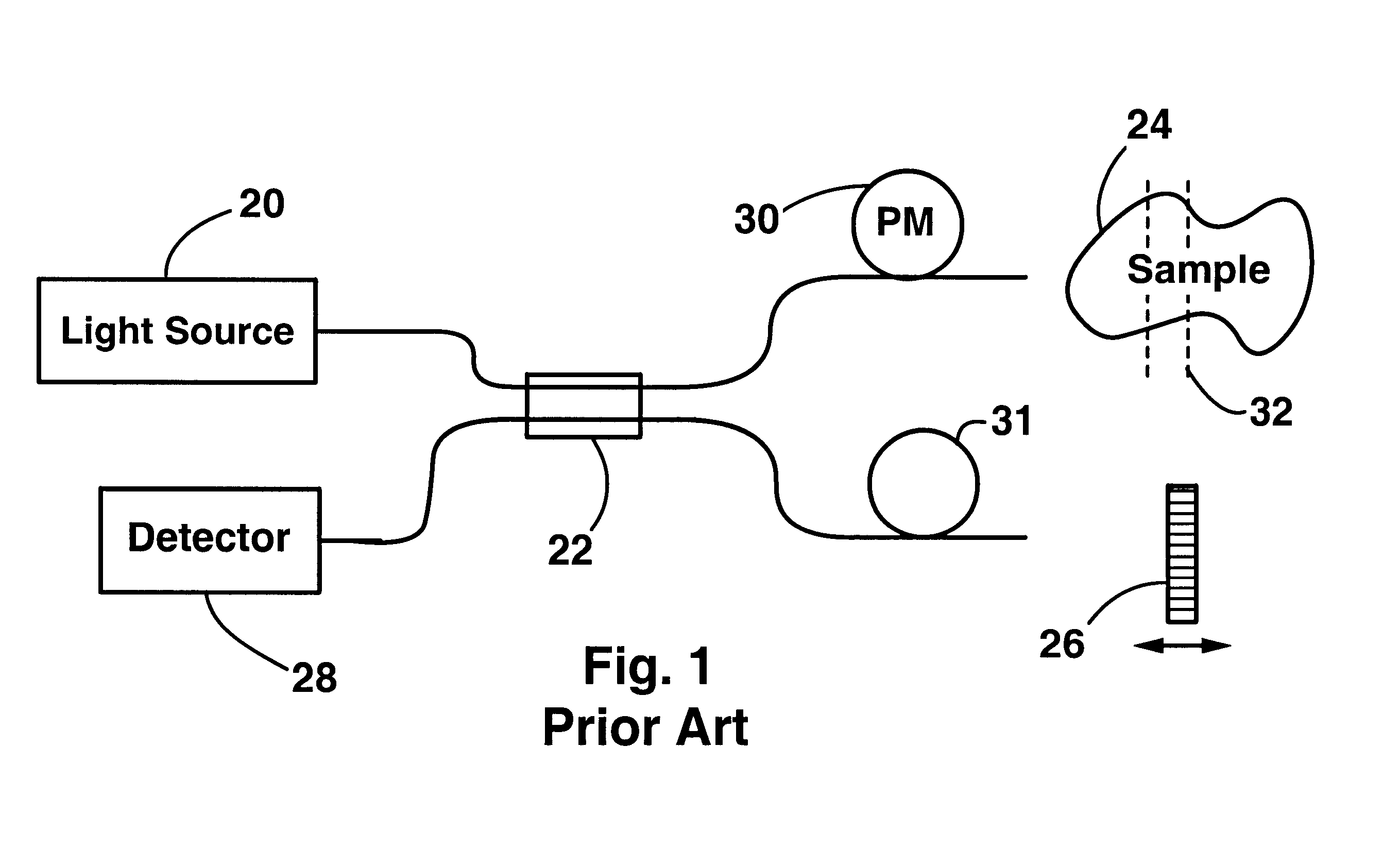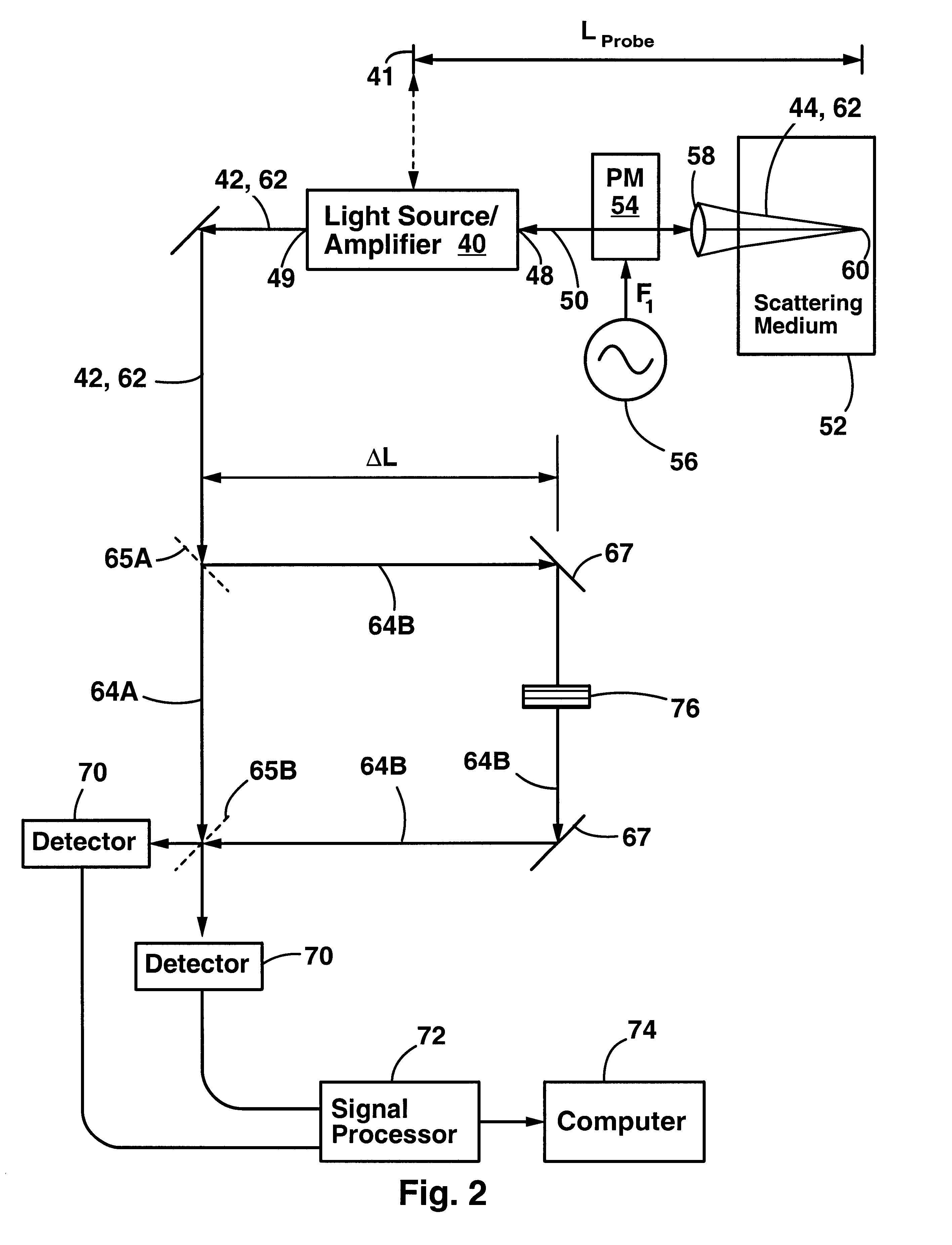Method and apparatus for performing optical coherence-domain reflectometry and imaging through a scattering medium
a scattering medium and optical coherence domain technology, applied in the field ofconfocal microscopy and optical coherence domain reflectometry (ocdr), can solve the problems of inability to perform high resolution measurements through light scattering materials, reduced signal to noise ratio of devices, and needing a more powerful light source, etc., to achieve high spatial resolution
- Summary
- Abstract
- Description
- Claims
- Application Information
AI Technical Summary
Benefits of technology
Problems solved by technology
Method used
Image
Examples
Embodiment Construction
FIG. 2 shows a first embodiment of an apparatus for performing optical coherence domain reflectometry on a sample of light scattering media. In the first embodiment, the apparatus is constructed from bulk optical components. A two output light source 40 illuminates a sample 52 with a probe beam 44. The sample comprises a light scattering medium such as biological tissue. The light source emits the probe beam 44 from a probe aperture 48. The light source also emits a reference beam 42 from a reference aperture 49. The reference beam 42 is emitted directly into an interferometer having a short arm 64A and a long arm 64B. The interferometer shown is a Mach-Zehnder type, but other types can be used as well. The interferometer outputs light into two optical detectors 70 which detect interference. The detectors output to a signal processor 72 and a computer 74.
The light source 40 preferably has a relatively short coherence length in the range of 30 to 3000 microns. The reference beam 42 a...
PUM
 Login to View More
Login to View More Abstract
Description
Claims
Application Information
 Login to View More
Login to View More - R&D
- Intellectual Property
- Life Sciences
- Materials
- Tech Scout
- Unparalleled Data Quality
- Higher Quality Content
- 60% Fewer Hallucinations
Browse by: Latest US Patents, China's latest patents, Technical Efficacy Thesaurus, Application Domain, Technology Topic, Popular Technical Reports.
© 2025 PatSnap. All rights reserved.Legal|Privacy policy|Modern Slavery Act Transparency Statement|Sitemap|About US| Contact US: help@patsnap.com



